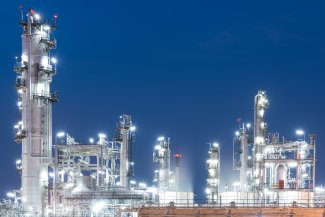Operations

Price
Add to Cart
Operations
This ebook discusses how to operate a facility that is already in operation. It includes housekeeping, the storage and handling of hazardous materials, emergency response and non-process operations.
Housekeeping
The section of this ebook to do with Housekeeping is shown here.
Good housekeeping is central to all types of effective operational and maintenance work. The quality of housekeeping also provides auditors and other outsiders with an opportunity to provide a quick evaluation of the overall operational standards in a facility. In the words of the proverb, “You don’t get a second chance to make a first impression”. And it is housekeeping that creates that first impression. Housekeeping also provides a quick check regarding culture and employee participation since everyone has an impact on the appearance of the facility.
Some of the actions that help achieve good housekeeping are as follows.
- Ensure that all tools and equipment, particularly firefighting equipment, are located in the assigned places — “a place for everything and everything in its place”.
- Remove all dry grass, brush, or weeds to avoid the potential for a fire spreading.
- Ensure that all discarded materials, particularly those that are potential fire hazards, are disposed of properly and continuously throughout the job progress.
- Avoid accumulation of combustible items such as spilled oil, woods and rags because they can be a fuel source during a fire. Oil-soaked rags should always be promptly disposed of in covered metal cans.
- Remove tripping hazards.
- Keep drain openings and free-flowing drainage systems free of debris.
- Keep aisles and walkways free and clear of maintenance equipment and tools in order to eliminate tripping hazards and to ensure that emergency evacuation is not restricted and that access to firefighting equipment is not hampered.
- Ensure that junction and switch box covers on electrical circuits are secure and tight.
- Promptly eliminate trace hydrocarbon leaks from lines, valves, and stuffing boxes (this is often a strict requirement of the environmental regulations also).
- Remove and replace damaged or oil-soaked insulation.
- Clean up spills at once.
- Nails, staples, and other puncturing metals should be bent under or removed from spent packing or lumber and stacked with points on bottom.
- Ensure that all maintenance unused materials have been removed and unused parts returned to the store.
- Dismantle all scaffolding once it is no longer needed.
- Ensure that stacked materials are secured to prevent them from falling with the heaviest objects closest to the floor.
Housekeeping includes checking that equipment and piping is in good condition. All process and utility piping should be horizontal or vertical (a few process applications require piping to be sloped). Any equipment that is in a deteriorated condition should be identified and repaired. Any insulation that is oil-soaked is a fire hazard and should be replaced (the source of the leak should also be identified and repaired).
Table of Contents
Introduction
Regulations and Standards
Housekeeping
Storage and Handling of Hazardous Materials
Flammable Liquids
Oxidizing Agents
Catching Samples
Gas Storage Cylinders
Tank Operations
Filling and Emptying
Purging and Cleaning
Rotating Equipment
Emergency Response
Manual Emergency Shutdown
Evacuation, Escape and Rescue
Personnel Tracking
Non-Process Operations
Outside Storage
Coal and Coke Storage
Drum Storage
Cranes and Rigging
Lifting Precautions
Wire Ropes, Chains, and Slings
Tag Lines
Start-Up
Commissioning
Operational Readiness Review
Start-Up
Copyright © Ian Sutton. 2024. All Rights Reserved.
